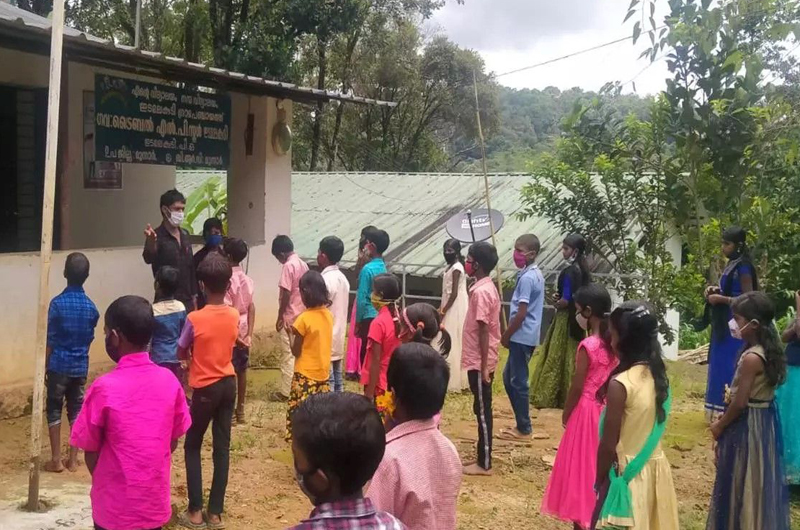Urgent steps are needed to improve utilisation of badly needed funds for the welfare of marginalised sections, says Bharat Dogra
Unemployment is a serious problem in India, and initiatives to mitigate this and improve labour welfare are urgent requirements. Logically, in this light, the budget of the Ministry of Labour and Employment must show an increasing trend. However, the reality is the reverse.
In 2021-22, the actual expenditure of this ministry was Rs 24,033 crore. This was reduced to a budget estimate (BE) of only Rs 16,893 crore in the next financial year and further reduced to Rs 16,117 crore when the revised estimate (RE) for the year was prepared. In the BE for 2023-24, this was further cut to Rs 13,221 crore and again reduced to Rs 12,521 crore in the RE. The 2024-25 budget has set apart Rs 12,531 crore, although in real terms, after providing for inflation, the figure will be lower. The BE of 2024-25 is thus almost half the actual expenditure in 2021-22.
Specific programmes such as the Pradhan Mantri Shram Yogi Maandhan, the Labour Welfare Scheme, the National Data Base for Unorganised Workers Scheme, the Labour and Employment Statistical System, and the National Child Labour Project have all seen drastic cuts in allocation of funds. Clearly, this declining trend in the ministry’s budget needs to be checked. On the other hand, welfare schemes for the Scheduled Castes are given high priority in any development framework committed to social justice, but recent data confirms the need for better utilisation of funds.
The Umbrella Scheme for Development of Scheduled Castes is a case in point. A sum of Rs 9,409 crore was allocated for it in the 2023-24 budget, but reduced to Rs 6,780 crore in the RE. So much could have been done for the education, livelihoods and other needs of Scheduled Castes if this large amount of allocated fund had been utilised.
The National Action for Mechanised Sanitation Ecosystem’ (NAMASTE), which replaced the earlier scheme for ending manual scavenging and rehabilitating those engaged in this hazardous work, made use of less than one-third of the funds allocated during 2023-24. The case of SMILE (Support for Marginalised Individuals for Livelihood and Enterprise) is very similar.
The big picture – the Department of Social Justice and Empowerment was sanctioned Rs 12,847 crore in 2023-24, and the figure was cut to Rs 9,853 crore in the RE. A look at the records reveals appallingly low utilisation of already allocated funds in other departments, too. The Ministry of Tribal Affairs was allocated Rs 12,461 crore in the 2023-24 BE. The RE showed a reduction of this figure to Rs 7,605 crore – this gap of 38 per cent is shocking when there are so many urgent needs of tribal communities that remain unmet. The BE for the Central Sector Schemes/ Projects of this ministry for 2023-24 was Rs 6,618 crore, which was cut by more than half to just Rs 3,072 crore in the RE.
The Eklavya Model Residential Schools Project serves as a good example of the effect of such non-utilisation. The BE of Rs 5,943 crore was reduced to Rs 2,471 crore in the RE, and the impact on the schools, where students are already struggling with trying conditions, can be easily imagined.
In the case of people classified under nomadic tribes, semi-nomadic tribes and denotified tribes, a scheme for their economic empowerment, known as SEED for short, was allocated Rs 40 crore in 2023-24, which itself was very low for a national-level scheme. But this was further curtailed to a mere Rs 15 crore in 2023-24.
The funds allocated in the BE are not expected to be reduced in the RE in cases where the original figure was low, or in respect to high priority departments and ministries. However, data shows that there have been quite a few arbitrary, difficult to justify cuts in the 2023-24 financial year. The Rs 86,175 crore BE for the Department of Health and Family Welfare was reduced to an RE of Rs 77,624 crore. The BE of Rs 76,431 crore for the Ministry of Housing and Urban Affairs was cut to an RE of Rs 69,270 crore. Even the BE of Rs 10,222 crore for the high-priority Ministry of New and Renewable Energy was cut to an RE of Rs 7,848 crore. The Ministry of Planning, the Department of Science and Technology, the Ministry of Statistics and Program Implementation, and the Department of Justice and Social Empowerment were also victims of cuts in allocation.
Specific schemes that were affected include the high-priority Pradhan Mantri Awas Yojana (housing for the poor), the Pradhan Mantri Gram Sadak Yojana (rural roads), the Urban Rejuvenation Mission, the Swachh Bharat Mission Urban (urban sanitation programme), Mission Shakti (for protection and empowerment of women), SANKALP (skill acquisition), National Mission for Natural Farming, the Border Area Development Programme, and the National Cyclone Risk Mitigation Project. Such arbitrary cuts in welfare schemes for marginalised communities are very worrying. Immediate steps should be taken to improve utilisation of funds in the new financial year 2024-25.
(The writer is a senior freelance journalist based in New Delhi.)



 from Webdoux
from Webdoux